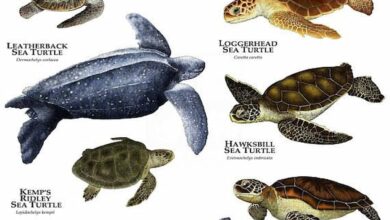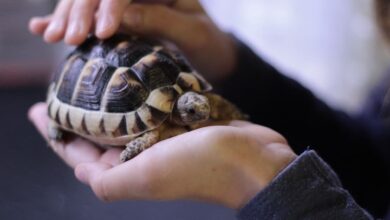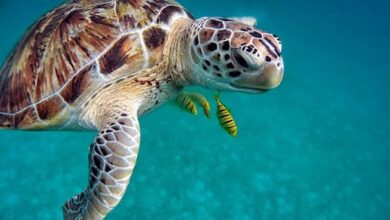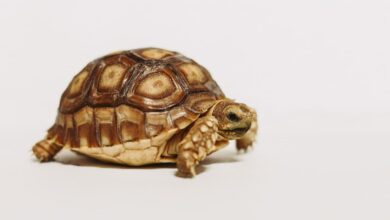Sexing Of A Reeves Turtle
Things To Try When Sexing Of A Reeves Turtle
There is not much information about the sexing of the Reeves Turtle online but here is what we know.
Both male and female Reeve’s turtles have notched plastrons. The difference is in the shape of the notch. Males and females have slightly differing plastrons. In a male the tail end of the plastron will be slightly concave and split (forming a V shape) and in females it will be un-split and flatter. In males it will be narrower and will appear to be in the form of a V, while in females it will be much broader. Because of the wider space, the notch on a female will not look like a V but will, if anything tend more to appear as a U (kind of.)
Males have thicker tails generally speaking, or at least they are thicker towards the base.
Males generally stop growing at around 5″ so if you have a Reeve’s that is over this length there is a good chance its female.
Reeves Turtles can be sexed more accurately when they are at 3″
Sexing Of A Reeves Turtle Pictures Of Male & Female
Of course all animals are individuals and there is always the chance that a given turtle will not conform to the V = male, U = female formula.
Reeves Turtle Information
Reeve’s Turtle is a member in the genus Mauremys family. It is one of the biggest genera in the Old World turtles family Geoemydidae. The taxonomy for this group has fluctuated at times, but it is widely accepted that eight species are valid: the Vietnamese or Annam Pond Turtle (M. The Caspian pond tortoise (M. caspica), the Mediterranean pond tortoise (M. The Mediterranean pond turtle is M. The Kwangtung River Turtle (M. Turtles of Reeve (M. The Balkan Pond Turtle (M. The golden thread turtle is M. sinensis).
Reeves Turtle Appearance
Reeve’s Turtle is not a very colorful species. The carapace has three longitudinal keels, and can range from tan through olive green to dark black. There may be faint contrasts in the form of smudging or radiation. The plastron of Mauremys species is a typical example of the other species. It has a base of yellow, tan or cream with gray, dark brown, or black smudges. Dark smudges can be found in the middle of each plastral scale, with radiations at their edges. Seams between the scutes can be lighter than base colors on the carapace or plastron. Fresh growth is often beige or creamy. Reeve’s turtles have a soft skin with a similar coloration to the carapace. The head is the only place where patterning may appear. It can vary from individual to individual, and it appears as yellow to cream striping, spots or mottling. Legs, and soft parts of the body may have a lighter edge on their leg scales.
Where can you find a Reeves Turtle?
Natural range of the common Reeves turtle includes central and eastern China as well as North and South Korea. Taiwan and Japan are also included. Genetic studies indicate that the presence of this species in Japan is likely the result multiple human introductions. However, the jury is still not out as to whether or not it is native in Taiwan. Research is still ongoing.
As might be expected, M. reevesii is a species with a large range of distribution. It appears that there are several distinct morphological types. Turtles in certain localities have distinct physical characteristics, which aren’t seen or at least less common in other locales. M. reevesii typically appears as the familiar brown turtle of 4 to 6 inches, but with an occasional melanistic male. There is also the megalocephala, which can reach up to 9 inches in females that are exceptionally large. Males tend to be melanistic. Moreover, some populations of M. reevesii are consistently bigger than mainland populations. Even females show melanism.







